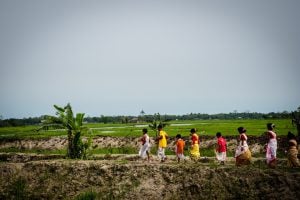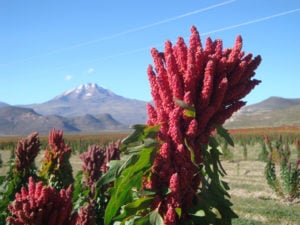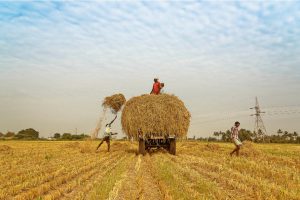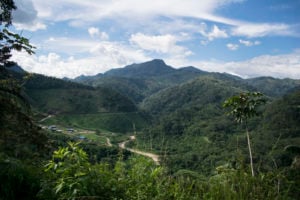“We return to our fields every day, hoping for a miracle but the days are just getting hotter. If the temperature continues to rise, we are not sure how we will survive,” said Bibi Sajida. She was one of the people taking part in a focus group discussion in Badin district of Pakistan’s Sindh province undertaken by LEAD Pakistan. Her husband is an agriculturalist, and it is the primary source of their family’s income, and things are projected to get much worse. Studies indicate that temperatures in Sindh will increase by 4 degrees Celsius by the end of this century.
Climate change is typically perceived as a series of floods, droughts and heat waves. It is only natural to focus on such extreme catastrophes and not the seemingly minimal rise in temperatures. However, the World Bank’s latest regional flagship report titled ‘South Asia’s Hotspots’ reveals the long-term impacts of increasing average temperatures on living standards (quantified based on consumption expenditures). The lead economist and co-author of the report, Muthukumara Mani, recently presented the key findings for Pakistan at a talk hosted by LEAD Pakistan.
In the report “hotspots are defined as areas where changes in average weather will adversely affect livings tandards. Hotspots are the result of two interrelated factors: (a) the magnitude of predicted changes in average weather at the local level; and (b) the relationship between weather and living standards in that location.” Due to the high dependence of rain-fed agriculture in Pakistan – and South Asia as a whole – the impact of weather on living standards is particularly high.
Unfortunately, despite being the fastest growing region in the world, South Asia is among the poorest. Under a carbon-intensive climate scenario, it is estimated that around 800 million people in this region – 45% of the population – currently live in areas projected to become moderate or severe climate hotspots by 2050. The report defines three levels of hotspots, “Hotspots are labelled mild when projected consumption spending declines by less than 4 percent, moderate for declines of 4-8%, and severe for declines exceeding 8%.”
But with pressing issues such as low literacy rates, inadequate healthcare facilities and lack of infrastructure, South Asian countries such as Pakistan struggle to prioritise and allocate resources for climate change. Even though financing climate action inevitably results in enhanced resilience and accelerated socioeconomic growth – how best to do this is far less clear. Mani explained, “Decisions such as ‘where and how much money to put?’ require information on how climate change impacts their economies”. Similarly, the impacts of gradual variation in temperature and precipitation is comparatively uncharted territory. While we have are familiar with early warning systems for mitigating rapid on-set disasters such as floods, we are unaware of the potential threats associated with supposedly insignificant temperature change.
Poor farmers hit the worst
While it might be difficult to quantify the socioeconomic impacts of gradually increasing temperature, the effects are already becoming clear. Mani recalled the tragic incident of an Indian farmer who committed suicide in the Indian state of Maharashtra owing to the varying temperature and precipitation that severely affected his crop yield. “Rainfall and temperature [variance] have reached such a stage that cultivating sugarcane and cotton is no longer suitable. However, farmers continue to grow these crops – due to lack of awareness – which inevitably results in reduced yield. To make up for the losses, they take loans but the crop fails again. Hence they end up in a vicious cycle of indebtedness and ultimately commit suicide’. Previous research has shown that climate change may have contributed to the suicides of nearly 60,000 Indian farmers and farm workers over the past three decades, due to the toll of rising temperatures.
Serious health and productivity damage
Rising average temperatures are also expected to reduce labour productivity, impact health and migration. The study shows that labour productivity in Pakistan decreases as temperature increases. In addition, the warmer climate facilitates the spread of vector-borne and other infectious diseases, resulting in loss of productivity and income.
Climate-induced migration is another byproduct of this climate change. It is estimated that approximately 193 million people in Pakistan will live in climate hotspots – the total population of Pakistan as of 2017. With the decline in incomes, and variations in rainfall, not only will people be pushed into poverty, but many may be forced to relocate, depending on the severity of the impact. With limited financial resources, Pakistan simply does not have the capacity to accommodate huge movements of people.
These factors in turn impede economic growth and worsen poverty levels. While agriculture in Pakistan’s northern areas is thriving due to the warmer temperatures, the study shows that Punjab and Sindh provinces – which contribute 53% and 30% to national GDP respectively – are likely to face a 3% decline in overall living standards. This decline can be attributed to lower incomes, as the changing climate will soon force people out of their traditional professional domains.
The report recognises improving basic infrastructure and increasing access to electricity could ease the decline in living standards in Pakistan in these distressing times. In addition, policy actions to stimulate nonagricultural employment opportunities and improve education and increase road density would also considerably improve living standards. While this report will hopefully help awaken policy makers to the reality of climate change, it is crucial to consider each district on a case by case basis since impacts differ at varying scales.
It is important to note the study’s findings do not take into account the rising sea levels and the subsequent vulnerability of the coastal regions in Pakistan. Therefore, to fill the lacunas and prepare specialised adaptation plans, Ali Tauqeer Sheikh, CEO of LEAD Pakistan, suggested developing an inclusive climate vulnerability assessment for each district in the country.
![<p>Pakistan is one of the world’s countries most vulnerable to the impacts of climate change [image by Asian Development Bank]</p>](https://dialogue.earth/content/uploads/2016/03/Floods-Pakistan-ADB.jpg)







